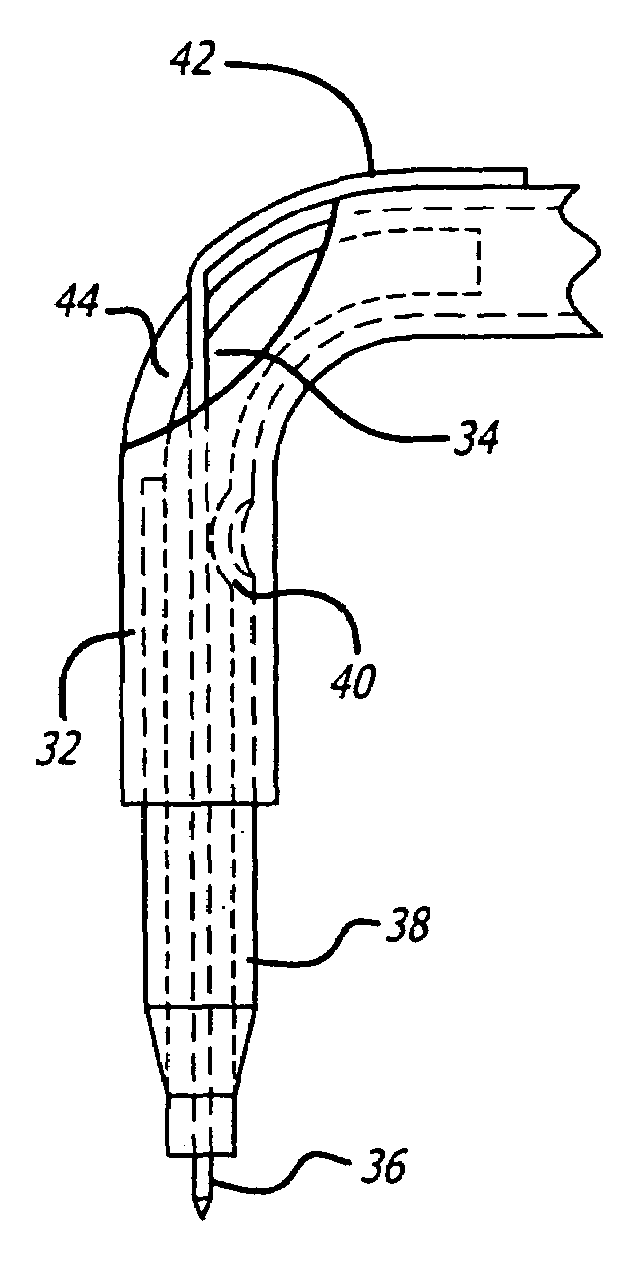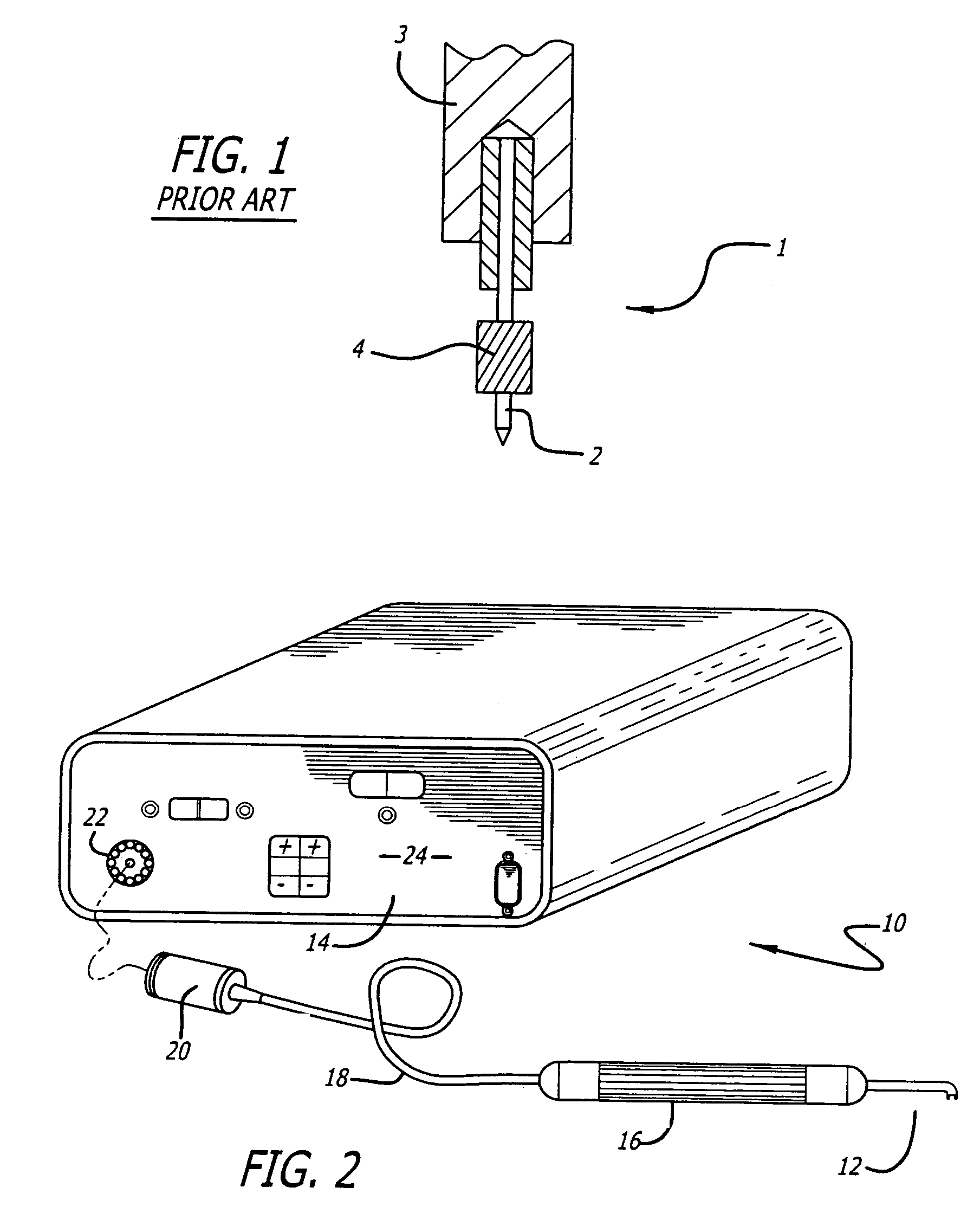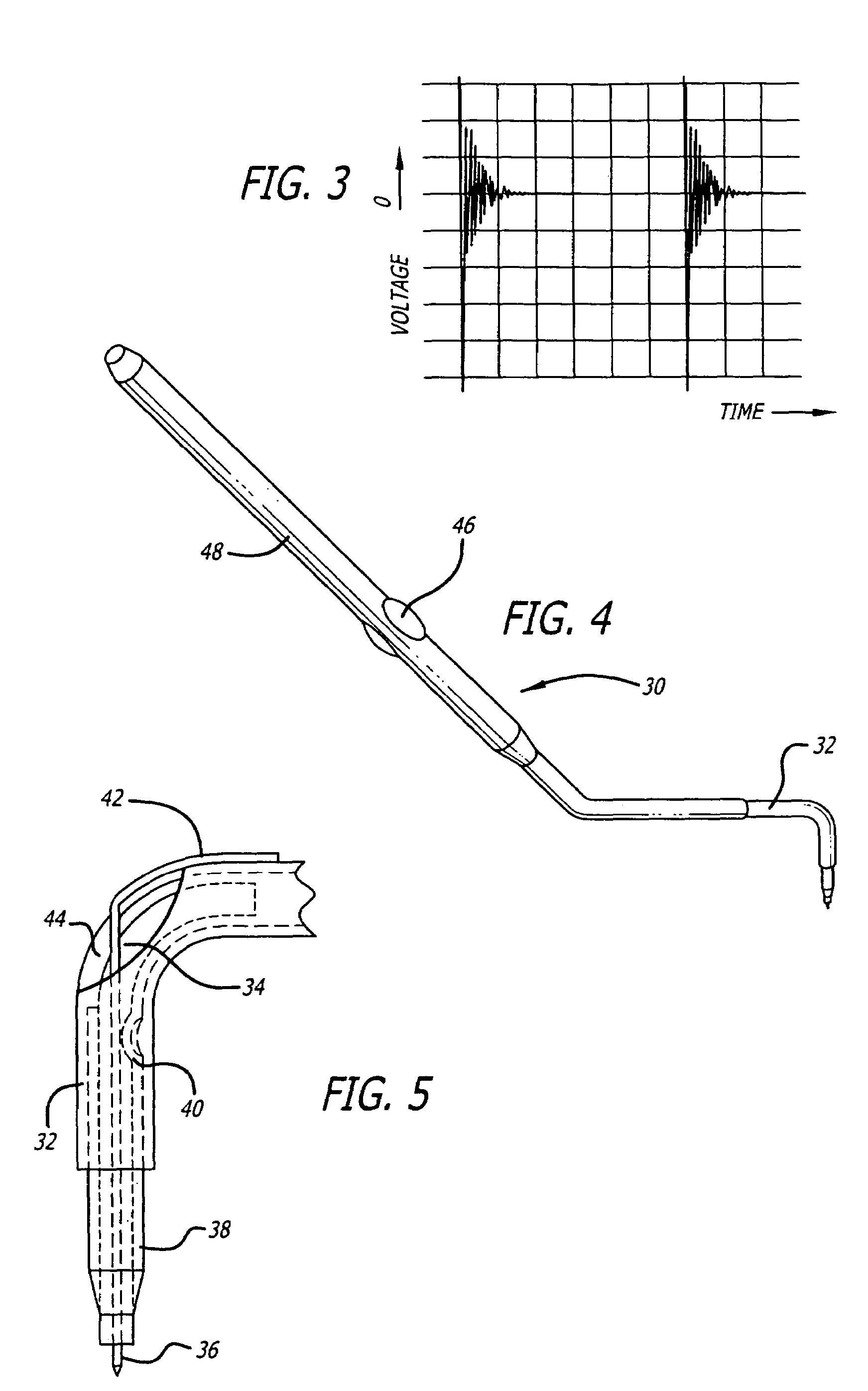Electrode assembly for a thermokeratoplasty system used to correct vision acuity
a technology of thermokeratoplasty and electrode assembly, which is applied in the direction of eye treatment, application, coupling device connection, etc., can solve the problems of glaring effect in the visual field, permanent damage to the eye, and risk of puncturing the descemets membrane and the endothelium layer
- Summary
- Abstract
- Description
- Claims
- Application Information
AI Technical Summary
Problems solved by technology
Method used
Image
Examples
Embodiment Construction
[0027]Referring to the drawings more particularly by reference numbers, FIG. 2 shows a thermokeratoplasty electrode system 10 of the present invention. The system 10 includes an electrode probe 12 coupled to a power supply unit 14. The power supply unit 14 contains a power supply that can deliver electrical power to the probe 12. The probe 12 has a hand piece 16 and wires 18 that couple the probe electrode to a connector 20 that plugs into a mating receptacle 22 located on the front panel 24 of the power supply 14. The hand piece 16 may be constructed from a non-conductive material.
[0028]The system 10 also includes a ground element (not shown) that is in contact with the patient to provide a return path for the electrical current provided by the power supply to the probe 12. By way of example, the ground element may be a lid speculum that is used to maintain the patient's eyelids in an open position.
[0029]The power supply 14 provides a predetermined amount of energy, through a contr...
PUM
| Property | Measurement | Unit |
|---|---|---|
| temperature | aaaaa | aaaaa |
| temperature | aaaaa | aaaaa |
| temperature | aaaaa | aaaaa |
Abstract
Description
Claims
Application Information
 Login to View More
Login to View More - R&D
- Intellectual Property
- Life Sciences
- Materials
- Tech Scout
- Unparalleled Data Quality
- Higher Quality Content
- 60% Fewer Hallucinations
Browse by: Latest US Patents, China's latest patents, Technical Efficacy Thesaurus, Application Domain, Technology Topic, Popular Technical Reports.
© 2025 PatSnap. All rights reserved.Legal|Privacy policy|Modern Slavery Act Transparency Statement|Sitemap|About US| Contact US: help@patsnap.com



